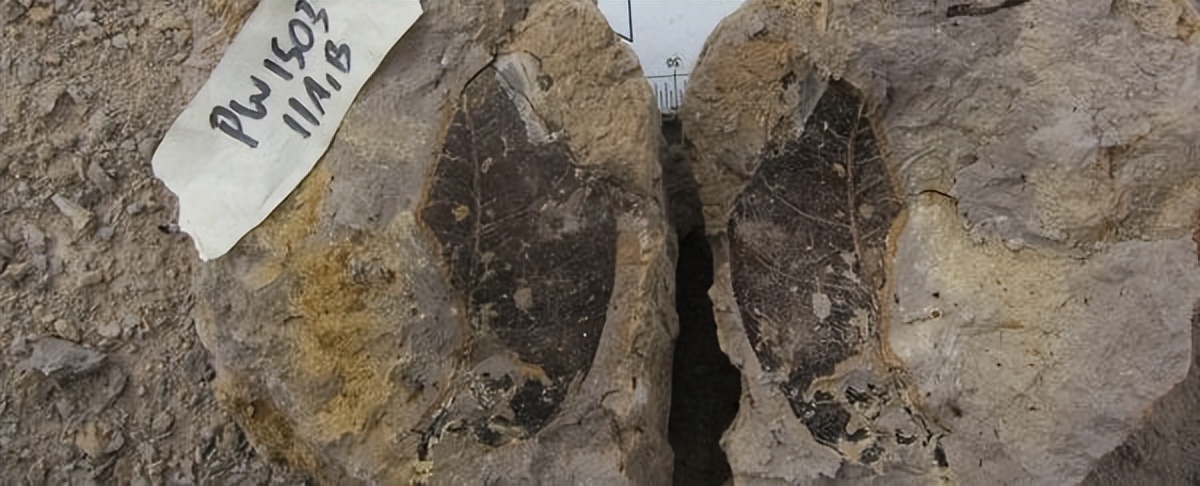
The researchers say a detailed study of Borneo's leaf fossils for the first time revealed that the rainforest that covered the island's surface already existed and promoted biodiversity for at least 4 million years.
The dipterocarp-dominated landscape looks very similar to the Pliocene period about 26,000-5.3 million years ago, making it a valuable ecosystem for future generations.
Borneo is home to nearly 270 species of dipterocarp trees, accounting for more than half of the total number of species worldwide. As the biodiversity of tropical Asia is currently under serious threat, the island plays a vital role in supporting this biodiversity.
A fragment fossil of a huge lobster leaf. (Wilf et al., PeerJ, 2022)
Peter Wilph, a paleobotanist at Penn State University, said: "This is the first time that the dominant life form dipterocarp that is unique to Borneo and the entire wet tropics of Asia not only exists, but actually dominates." "We found more fossils of dipterocarp than any other flora."
These dipterocarp are among the tallest tropical trees in the world, and some are able to grow to an altitude of about 100 meters (328 feet).
Wilf said fossil rocks on their leaves are difficult to spot because of the cover provided by the forest and its soil.
Previously, fossil pollen has been used to study plant life in Borneo, but because dipterocarp pollen decays so quickly, some suspect that these pollen studies do not show the full picture. Here, the team found rocks with many dipterocarp leaf fossils but few dipterocarp pollen, which supports the bias hypothesis.
(
Peter Wilph et al. )
The new study, which combines leaves and fossil pollen, identifies an ancient mangrove and swampy world, bordering tropical lowland rainforests with a diverse array of ferns and an abundance of climbing plants.
"We're really seeing what the environment was like millions of years ago," Wilf said. "It's very similar to what you can find there right now, even though these habitats have been deforested in most of the tropics of Asia."
Forests are under pressure from logging activities, land-based agricultural transformation and climate change. Borneo has a high rate of deforestation, and although much of the ancient rainforest in the brunei region of the island – where the study was conducted – is still preserved.
Maintaining and expanding this protection should be a top priority, the researchers say. Through pollination and the storage of large amounts of vegetative seeds, the diplodocus tree becomes the basis of life for a variety of plants and animals – including proboscis monkeys, clouded leopards, sun bears and rhino hornbills.
(Peter Wilph et al.) )
About 89 percent of the 460 Asian dipterocarp tree species are now in near-danger, while 57 percent are marked as endangered, critically endangered or extinct. This latest study suggests that if we let the landslides continue, we will lose four million years of forest history. A deeper understanding of the region's history should contribute to conservation efforts.
"There are very few fossil studies in tropical Asia," said Ferry Slik, an ecologist at brunei Darussalam University.
"I hope this study will inspire more research on tropical fossils, as they will tell us a lot about the natural history of the region."